This is part 6 in a series discussing forgotten RPGs (Part 1 can be found here, Part 2 here, Part 3 here, Part 4 here, and Part 5 here). That is, games most people have never heard of or that didn't last long on store shelves for one reason or another. This is another batch of fantasy games. Some of these games have been sitting on my shelf for years, but some are recent acquisitions, mostly ebay finds to add to my collection.


1. Wizards Realm (by Cheryl W. Duval, Niels Erickson, William G. Murphy, and Clifford Polite; published by Mystic Swamp in 1981)

This book is odd in that it uses a two-column format in landscape orientation, making it a bit awkward to read. The art is rather "cutish," and the ornaments take up every inch of free space, making it seem fuller (it works). The game uses d6s, d10s, and d20. Characters have 8 attributes determined by rolling 2d10 for each: strength, intelligence, constitution, dexterity, agility, charisma, appearance, and luck. There are 8 playable races: Humans, Dwergars (Dwarves), Elves, Hobbitry, Bogeys, Orcs, Goblins, and Trolls. There are 3 classes: warriors, spellcasters, and adventurers. Skills are acquired with skill credits, which basically increase the base percentage odds, depending on the type of skill. Basic skill use appears to be a 50% chance with one skill credit applied (increased with multiple skill credits). Combat is 1d20 + Attack Base: Strength + Dexterity + Agility [- Armor penalty] [+ weapon bonus if applicable skill credits were applied] minus 1d20 + Defense Base: Strength + Intelligence + Constitution [+ weapon/shield defense] [+ armor rating]. The difference is damage deducted from the Defender's Survival Points (Hit Points). I sense a pattern with these older games of skills not working the same as combat. It's like they based everything off the D&D rules, but in different directions (I type this sarcastically). Anyway, there are various types of combat results that make the game more interesting, which are basically critical hits. There's rules for mass combat, movement, magic (similar to skill use), and even for creating new monsters. A sample adventure is also included. I don't like using that many attributes for combat rolls, but I do like the approach to dealing damage. I'm glad I have this game, though it's not something I would play.

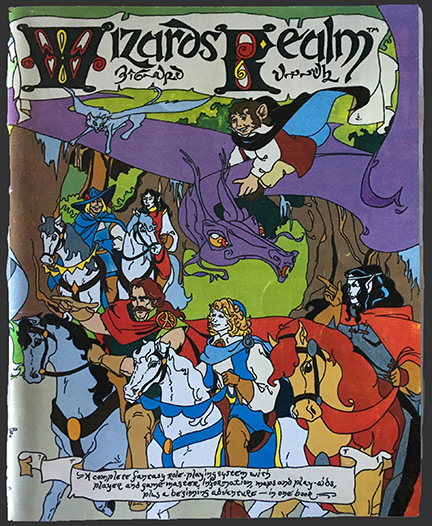


2. The Realm of the Gateway: The Magic Realm (by John Griffin and Matt Nixon; published by Griffin Games in 1996)

We're basically dealing with a multi-dimensional world, so that fantasy and magic can mix with starships and blasters. Since I only have this first book for fantasy, I don't know how well this melds. Characters have 6 attributes: strength, agility, constitution, intelligence, charisma, and will power. The race you choose determines how to roll for their ratings, but the base is 2d10±modifier. Skills seem to be level-based. Using skills consists of rolling under the ability + skill level on a d20 (I thought abilities were called attributes -- they seem to be losing consistency). Combat rolls are D% plus average of strength and agility plus 10 per level of weapon skill, and ± modifiers MINUS defender's roll (similar, but depends on how defending). Then the difference between the two are consulted on a chart determined by the type of defense (dodge, parry, or shield parry). Then an attack chart is referenced for the amount damage, potentially modified by the previous chart. There are different types of damage levels for different types of attacks, which seem to result in die rolls of damage to hit points (or whatever they are called). Interesting system with lots of damage options for various forms of damage.

Stop. Very confusing. I am now presented with Book One: The Magic Realm around page 81, with a new table of contents and the page count starting over. This is where character creation can be found. Later chapters include discussions of psionics (just my personal preference, but I don't like mixing psionics with fantasy), animals/creatures, magic. I'm just gonna come right out and say it: the organization sucks. If you want to check out this game and its subsequent books, they are available here, seemingly as newer versions. I like the premise behind it, but it's just not for me.




3. The Legend of Yore (by Brennan Taylor; published by Galileo Games in 1995)

I think it was RPGPundit who said that game fiction in the beginning of an RPG is never good. I tend to agree. I don't buy RPGs for the fiction. That said, it can help explain the setting and set the mood. This game starts with some fiction. It's a fantasy game, and seemingly traditional at that. I'm just going to skip it. I mean no offense to the author, but I just don't want to be bothered with it. Some may argue that they like good game fiction for the purposes I previously mentioned. That's fine. I'm not going to tell anyone what they should or should not like. I just wonder what people actually think of it in general (let me know).

With that rant out of the way, let us proceed. We're dealing with d10s and the gamemaster is called GOD. We get a quick reference of page numbers for various character creation components. Nice. We get 7 races (Humans, Elves, Dwarves, Goblins, Giants, Trolls, and half-breeds) and various ethnicities for each. Various backgrounds can also be applied, depending on race. There are 8 characteristics (2d10 for ratings, ± modifiers for race): strength, constitution, agility, willpower, knowledge, perception, beauty, and combat (this one is the average of strength, agility, and perception). Then consult a table to determine a base percentage for each rating. Next, background/profession skills are chosen. So a skill roll is the characteristic base percentage + 5% per skill level as D%. Combat/contested rolls mean that the defender rolls first, with his result (if successful) reducing the attacker's base percentage. Seems like a solid system, with the typical fantasy elements, like magic and creatures, following this point in the book. I probably would have given this system a try back in the day. It feels like something I would have done back then.

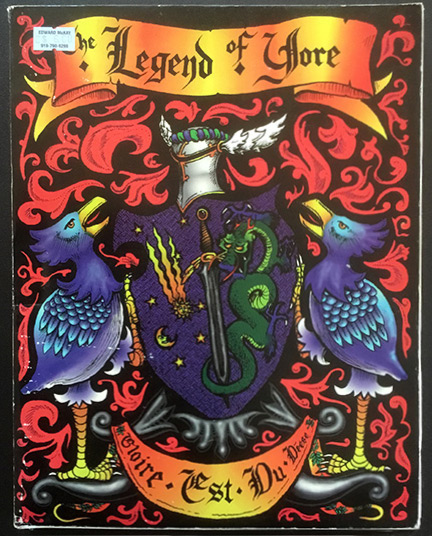


4. Pelicar (by Pharaoh Games; published by Ivory & Steel in 1996)

We get right into character creation. There are 8 attributes (3d10 for each): strength, stamina, reflexes, mentality, piety, sanity, senses, and beauty. That seems to cover a lot of bases. We move on to professions with lots of different types of magic-users. There are a number of the traditional races, plus a few unique ones, including a feline species. Attribute tables follow with the familiar method of applying modifiers for various uses (like attack or movement). There are different ways of gaining percentage-based skills, include from ancestries and trades. Combat is a D% roll plus applicable modifiers vs. a defense rating (beat this rating). This game kind of feels like Dangerous Journeys -- I'm not sure why, perhaps the explanations and the layout. The rest of the book discusses magic and creatures. The character sheet is like a d20 sheet in that it lays out all the modifiers. Lots of random tables for stuff. I don't see anything particularly wrong with the game, but I think it could have been greatly simplified in the execution and explanations.

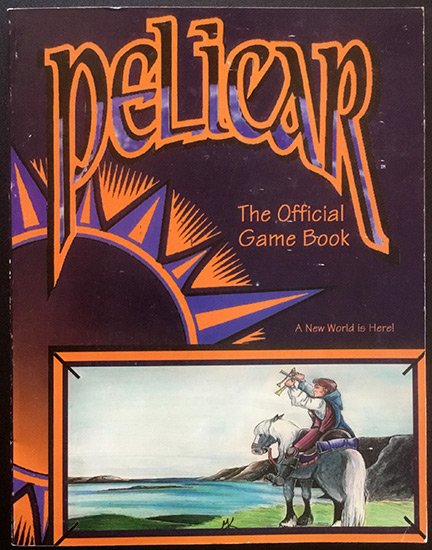


5. Darkurthe Legends (by Mathew Yarro and Colin Murcray; published by Black Dragon Press in 1993/1994)

This dark fantasy RPG gets right into it with character creation. There are 6 primary attributes (2d6+4 for each): strength, agility, willpower, intellect, person, and faith (this one depends on race and alignment). The typical fantasy races are here, plus corrupt versions and lycanthropes. Race orders are classes tailored to specific races, providing specific skills and other elements; these include Deathmasks, Necromancer Kings, Warlocks, Merenaries, etc. Characters can belong to guilds, cults, clans, and royal courts for added benefits. Skill use requires a table that provides a base success number determined by the appropriate attribute; roll d20 plus skill modifier to roll over that number. Combat is similar, but the skill modifier is determined by subtracting the defender's combat ability from that of the attacker. An attack/damage table is then referenced based on the rolled result. The magic system is particularly interesting with LOTS of modifiers for casting rolls, and variable ranges and durations. The various lands are described and the dark fantasy elements are clearly laid out, such as corruption and evil. Some of the creatures are particularly nasty (in a good way). While the system is not my cup of tea, the setting, magic, and creatures are ripe for adaptation to other games.

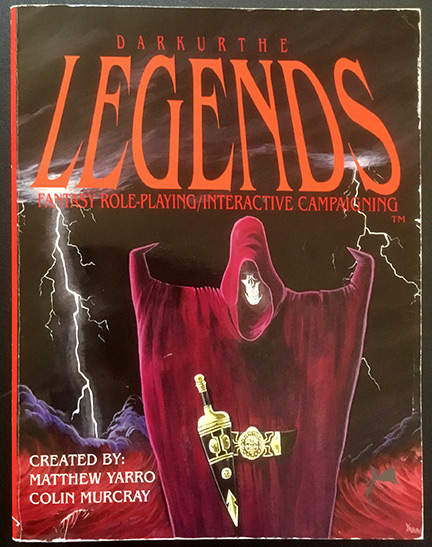


6. Monsters and Slayers (by Clifford Raymond Fagan; published by Atlantis Enterprises in 1991)

This is an interesting take on fantasy roleplaying. The setting is the British Isles of 537AD, but only because that's what it says. It doesn't really matter where you set it. Your character is a slayer, who goes around doing things for money: monster hunter, contract killer, etc. Only d6s are needed, which is always good. There are 7 statistics (roll 4 dice and keep lowest 3 for each): strength, endurance, dexterity, intelligence, luck, persuasiveness, and attractiveness. Ability rolls are roll 3d6 under statistic rating. Resistance rolls are essentially saving throws, which are 4d6 under rating. Gnomes and Elves seem to be the default non-human races, but others like Valkyries (who can fly and cast freezing wind), Red Devils (cast fire spells), and Mermen (cast water spells) are also possible. Combat is similar with a 2d6 roll over 8 as the base (7 for slayers). Grappling is interesting in that it takes multiple opponents into consideration. Improvement consists of increasing weaponry, magic, and stealth masteries (which lower the base attack number). Various assassin skills are accomplished in similar manners to ability rolls. All slayers can cast magic by making a luck ability roll. Spells, magic items, and monsters are kept relatively simple, which means the game is fairly simple to run. An adventure is also included. Critical hits are also fun. This is a good game for fast-play without all the detail, but some may find it too basic. The author is selling his remaining stock on ebay (Link).

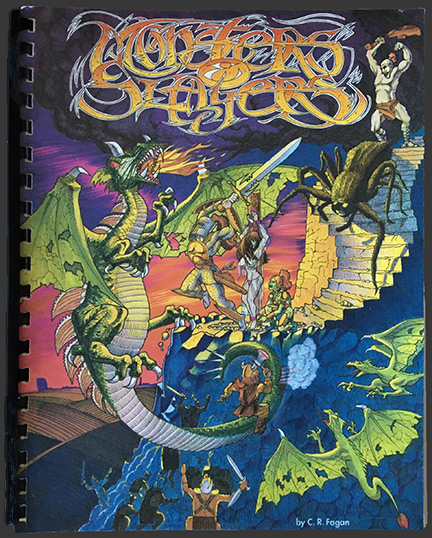


We're at the end of another batch. This one had some rough gems in it. This entry also comes with a bonus. I am offering a $4 discount on the Special Reprint of Lair of Sword & Sorcery, a fantasy RPG that is easy to learn, fast-playing, and probably unique in its approach. Just enter coupon code LBTZE3SRWQ at checkout with the Lair of Sword & Sorcery PDF in your cart to get it for only $7.95 $3.95.


Part 7... |







